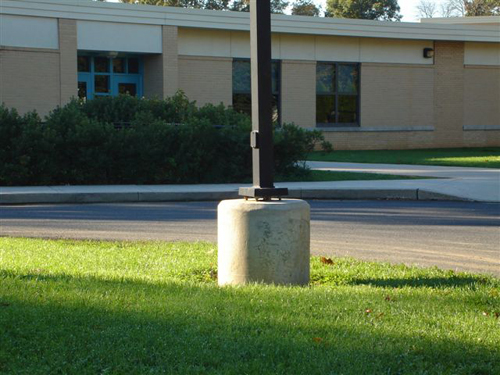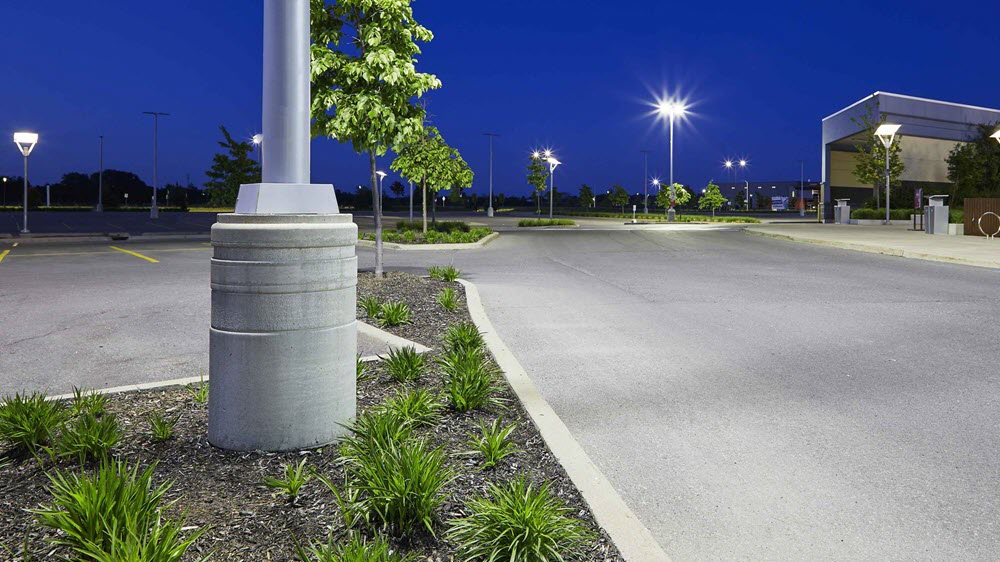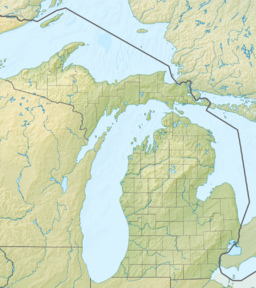Flood Light Base Servicesin Lake Orion MI
Comprehensive Flood Light Installation for Enhanced Safety
We Are Locally Owned & Operated For Over 37 Years
Contact Us Today!
We Serve Businesses In And Around The Following Cities:
About Flood Light Base Services
Introduction
Flood Light Bases form a cornerstone in proper lighting of commercial properties in Lake Orion. These infrastructure components play a pivotal role in the illumination of commercial spaces, offering both aesthetical and functional benefits. This guide provides detailed insights into the intricacies of Flood Light Bases, highlighting their significance, benefits, and real-world applications.
Understanding Flood Light Bases
In essence, Flood Light Bases serve as the ground support for high intensity floodlights, offering them stability and direction. They are commonly used in commercial settings, from parking lots to sports stadiums, where adequate, robust lighting is mandatory. The importance of Flood Light Bases can’t be overstated, especially for businesses looking to maintain a well-lit environment that guarantees the safety of those present and deters intruders.
Benefits of Flood Light Bases
Flood Light Bases offer multiple benefits for commercial establishments. Firstly, they provide stability to the floodlights, enhancing their performance and longevity. Secondly, their strategic placement enables the efficient and effective distribution of light across vast areas. This improved visibility can subsequently enhance the security and operations of commercial establishments.
It is also worth noting that well-installed Flood Light Bases give a professional aesthetic appeal that can positively impact the reputation of an establishment. For instance, a well-lit retail store will be more attractive to potential shoppers, increasing footfall and revenue. The services of companies like D&J Contracting are paramount in ensuring the Flood Light Bases are installed appropriately to reap these benefits.
Real-World Applications of Flood Light Bases
In the city of Lake Orion, the relevance of Flood Light Bases extends to various realms of commercial lighting. Sports facilities, for instance, rely heavily on these structures for illumination allowing games to continue into the evening. Car parks too, use these bases to support floodlights that ensure safety and deter car theft and vandalism.
Similarly, businesses like warehouses and manufacturing units benefit immensely from Flood Light Bases. In these environments, sufficient lighting is essential for operational efficiency and worker safety. Companies like D&J Contracting excel in providing these services, tailoring solutions to suit the unique requirements of different businesses.
Flood Light Basins: A Supportive Component
While discussing Flood Light Bases, one cannot overlook the Flood Light Basins. As a supportive element, these basins play an integral role in managing the drainage around the floodlights, thus further extending the life and functionality of the lights. They are crucial for maintaining the good condition of the Flood Light Bases and should be considered a vital part of the installation process.
Choosing the Right Provider for Installation
Choosing the right provider for installing or maintaining flood light bases or the often overlooked flood light basins is a crucial decision for any commercial property owner. Companies like D&J Contracting stand out in this regard due to the high quality of service and dedication to customer satisfaction. Their expertise in handling diverse client needs ensures that businesses in Lake Orion reap the full benefits of properly installed and maintained Flood Light Bases.
Take the Bright Step Forward
In conclusion, Flood Light Bases go beyond simply supporting lighting infrastructure; they play a key role in safety, operations, and aesthetics for commercial properties. From supporting the weight and performance of floodlights to contributing to the overall visual appeal of a business, these components undoubtedly add value. As such, strategic investment in quality Flood Light Bases – and their supportive counterparts, the flood light basins – should be a priority for businesses in Lake Orion.
As the highlight of this guide suggests, professional services like those provided by D&J Contracting are essential in ensuring that the installation and maintenance of the bases align with the highest industry standards. So, take the bright step forward with your commercial lighting by giving your establishment the robust infrastructure it deserves, led by competent and reliable Flood Light Base services.
Flood Light Base Services Gallery


Call Us Today to receive your Free Quote for
Flood Light Bases in Lake Orion
Serving: Lake Orion, Michigan

About Lake Orion, Michigan
Judah Church and Moses (or Samuel) Munson were among the first settlers. Munson, who arrived in 1824, built a sawmill in 1825, and planted the first orchard. Jesse Decker arrived from upstate New York with his wife, Mary, in 1825. He was energetic and became “everything to everybody”, so that the place soon became known as “Decker’s Settlement” and the town “Canandaigua,” after Canandaigua, New York, where the settlers originated. The settlement grew into a bustling commercial center with a sawmill, tavern, post office, general store, blacksmith shop, school and cemetery. In 1828, a power dam was built uniting several small lakes and forming the mile-wide Lake Canandaigua, just west of the village.
In 1830, Decker raised the first frame barn in the area, with local Native Americans’ help. The first post office was opened in 1832, with Decker as postmaster. In 1835, the community’s name was changed from Canandaigua to Orion, and Lake Canandaigua was renamed Lake Orion. The new name was chosen by the village’s attorney, reportedly for the Orion Trees in the area. The same year, the Township of Orion was formally approved by the Michigan Territorial government. Decker became the first Supervisor of Orion, with a salary of $2 a year. By 1836, two persons were licensed to keep taverns in the town, one of whom was Decker. He was elected to the first Michigan House of Representatives in 1837 and also served as justice of the peace for the Orion area. By 1840 Decker owned 440 acres (1.8 km) of land.
In 1909 a Marine Postal Center was established, with mail delivered to over 300 cottages on the lake and islands by boat. Lake Orion was the first town in the United States to have this service.
In 1929, Amelia Earhart visited Lake Orion at the invitation of Orion resident and fellow aviator William Edmund Scripps. While visiting Scripps Mansion, she flew an experimental glider. Also in 1929, the village known as “Orion” was officially renamed “Lake Orion.”
The Village of Lake Orion was served by trains on the Michigan Central Railroad from 1872 to 1976, and the Detroit United Railway interurban system from 1899 to 1931. Each service had its own track and depot, although both were named “Orion” and in the village near the intersection of M-24 and Flint Street. Lake Orion also had a flag stop, Rudds Station, on the MCC line east of the village near Clarkston and Kern Roads. Rudds Station served Rudds Mill, a milling operation on Paint Creek that produced wheat. The MCR line ran from Detroit to Mackinaw City, and the Flint Division of the DUR line ran from Royal Oak to Flint. With the automobile’s increased popularity and the paving of M-24 in 1929, passenger service on the DUR ended in 1931, and track was scrapped during the 1940s for a World War II metal drive. Little remains of the corridor. The MCR line maintained passenger service until 1950, and freight service continued until the 1970s. The MCC track passed through New York Central and Penn Central and operated until 1976, when it was closed after acquisition by Conrail. The original MCR rails and track east of M-24 were completely removed, and the line from the village south toward Rochester, now serves as the recreational Paint Creek Trail. The line from the village north to Oxford exists now only as a narrow path, but still passes over the historic Indian Lake Road Stone Arch Bridge, a small limestone bridge constructed over Indian Lake Road in 1891.
Lake Orion was also served by trains on the Grand Trunk Western Railroad. The Polly Ann line ran from Pontiac to Caseville, passing through western Orion Township. Two flag stop stations served Lake Orion on the Polly Ann line. Eames Station was near the intersection of Joslyn and Silverbell Roads, and Cole Station was near the intersection of Joslyn and Clarkston Roads. A short section of the track was still in use as of 2014, operated by Canadian National Railway specifically to connect the General Motors Orion Assembly plant with the CN main line in Pontiac, but all track north of Orion Assembly was eliminated and removed by 1985. In 1993, a Rails to Trails federal grant was awarded and matched by the Michigan Department of Natural Resources, providing more than $728,000 to purchase the right-of-way from Grand Trunk. The corridor now serves as the recreational Polly Ann Trail, connecting Lake Orion with Oxford, Addison Township, and Leonard.
Lake Orion was an amusement destination for residents of Metro Detroit in the first half of the century. The addition of the Michigan Central Railroad track in 1872 set the stage for Lake Orion as a major summertime resort for those traveling on the line, especially between Detroit and Flint. In 1874, several prominent citizens formed the Orion Park Association to capitalize on the growing number of travelers to the area. They developed a park on the shore of the lake (now Green’s Park) near the train depot and operated a steam-powered boat for lake excursions and delivery to Park Island. Over time, the Park Island Amusement Park grew to include a penny arcade, carousel, souvenir booths, refreshment booths, lunch stands, dining rooms, dance halls, and a wooden roller coaster named “The Thriller.”
The swimming beach on the north side of Park Island had both a men’s and ladies’ bathhouse, a waterslide, and numerous diving boards, the highest 42 feet above the water. Lake Orion was stocked annually with bass, pickerel, and pike, and fishing tournaments and contests were held seasonally. Several double-deck boats, including the “City of Orion,” offered lake excursions replete with bands and a dance floor on the upper deck. At night, Park Island was illuminated by strings of thousands of lights.
Once a premier destination among vacationers, the park suffered through the Great Depression and several fires, gradually losing business before closing in 1955. The park was owned by the Detroit Edison Company (via the purchase of a subsidiary, the Orion Power and Light company) from 1912 until closure. The island and park property were later purchased by a private real estate developer who built homes on the island in the 1960s. In many brochures and newspaper advertisements in the 1910s and 1920s, Lake Orion was advertised to potential travelers as the “Venice of the Middle West,” “Paris of Detroit,” and “Lake Orion, the One Best Resort”.
The story of the Lake Orion Dragon says that sometime in the 1800s, a group of local children played a prank by building a fake dragon and launching it on the lake. A number of people saw it and soon Lake Orion was known for its dragon. There are competing stories about who made it and how it was built, but most agreed that a Levi A. Wild was responsible.
“That same year the Lake Orion ‘dragon’ made its entrance into Orion history. First seen by two ladies near the present Robert’s Rondevoo cove, the animal grew in length as the story grew in listeners. What had started out as an average-sized lake monster was claimed by some to be at least eighty feet long. Detroit and other newspapers joshingly suggested, upon hearing of the behemoth, that Orion residents should ‘drink more well-water in the future.'” The nickname of Lake Orion High School’s sports teams (the Dragons) derives from this.
According to the United States Census Bureau, the village has a total area of 1.30 square miles (3.37 km), of which 0.79 square miles (2.05 km) is land and 0.51 square miles (1.32 km) is water.
| Lake Orion | |
|---|---|

Lake Orion aka Orion Lake
|
|

Lake Orion
|
|
| Location | Lake Orion, Michigan |
| Coordinates | 42°47′N 83°15′W / 42.783°N 83.250°W / 42.783; -83.250 |
| Basin countries | United States |
| Surface area | 506 acres (205 ha) |
| Max. depth | 80 ft (24 m) |
| Settlements | Village of Lake Orion, Michigan |
Lake Orion (less commonly known as “Orion Lake”) is a medium-sized inland lake, with area of 506 acres. It has a maximum depth of 80 feet and an average depth of 16 feet. The lake is located within the Village of Lake Orion and Orion Township. It is the eighth largest lake by area in Oakland County.
The current area of the lake was formed by a collection of smaller lakes over time, beginning with the damming of Paint Creek in the 1830s. Canals have also been dredged to maximize lake frontage.
There is a public access boat launch on the northern side of the lake. It is administered by the Michigan Department of Natural Resources.
There are several islands in Lake Orion, some of which feature seasonal and year-round residences. The largest islands, Bellevue and Park, are connected to the mainland by two-lane bridges and are populated year-round. Most boats can pass under the Bellevue Bridge, which has a clearance of 9.6 feet. The Park Island bridge has a lower clearance that allows only canoes, kayaks and rowboats to pass underneath. The remaining islands are reachable only by watercraft. Victoria Island is the third largest island, and is home to several seasonal and year-round homes. A smaller island, Paint Island, was home to a single residence from the 1850s to the 1950s. Little remains of the island due to erosion save for a solitary tree, and the shallow waters can be a hazard to boaters. Sweet’s Island is home to the Lake Orion Boat Club, and features a private boathouse and docks for LOBC members. Romance Island is home to a single cottage, Preston Island to two seasonal cottages, Dot Island to one seasonal cottage and Armada Island to four seasonal cottages. The residences on all islands except for Bellevue and Park require the use of watercraft to travel to and from the mainland.
| Census | Pop. | Note | %± |
|---|---|---|---|
| 1860 | 292 | — | |
| 1870 | 304 | 4.1% | |
| 1880 | 429 | 41.1% | |
| 1890 | 522 | 21.7% | |
| 1900 | 756 | 44.8% | |
| 1910 | 717 | −5.2% | |
| 1920 | 929 | 29.6% | |
| 1930 | 1,369 | 47.4% | |
| 1940 | 1,933 | 41.2% | |
| 1950 | 2,385 | 23.4% | |
| 1960 | 2,698 | 13.1% | |
| 1970 | 2,921 | 8.3% | |
| 1980 | 2,907 | −0.5% | |
| 1990 | 3,057 | 5.2% | |
| 2000 | 2,715 | −11.2% | |
| 2010 | 2,973 | 9.5% | |
| 2020 | 2,876 | −3.3% | |
| U.S. Decennial Census | |||
The demographics below are for the village only. Refer to Orion Township for the demographics of the entire township.
As of the census of 2010, there were 2,973 people, 1,304 households, and 709 families residing in the village. The population density was 3,763.3 inhabitants per square mile (1,453.0/km). There were 1,483 housing units at an average density of 1,877.2 units per square mile (724.8 units/km). The racial makeup of the village was 94.2% White, 1.6% African American, 0.2% Native American, 1.1% Asian, 0.9% from other races, and 2.0% from two or more races. Hispanic or Latino of any race were 3.5% of the population.
There were 1,304 households, of which 27.0% had children under the age of 18 living with them, 40.0% were married couples living together, 10.7% had a female householder with no husband present, 3.8% had a male householder with no wife present, and 45.6% were non-families. 38.0% of all households were made up of individuals, and 11.7% had someone living alone who was 65 years of age or older. The average household size was 2.19 and the average family size was 2.93.
The median age in the village was 41.2 years. 20.6% of residents were under the age of 18; 7.8% were between the ages of 18 and 24; 27.9% were from 25 to 44; 27.5% were from 45 to 64; and 16.2% were 65 years of age or older. The gender makeup of the village was 47.5% male and 52.5% female.
As a village, Lake Orion is provided assessing, counties and school districts tax collecting and elections administration for county, state and national by Orion Township. The Village of Lake Orion is a Michigan home rule village with a council-manager form of government. The village is governed by a local charter adopted by village electors. The village’s legislative body is its village council, comprising a President and six council members. The village council appoints a Village Manager to serve as the Chief Administrative Officer of the government responsible for the management of the village’s daily operations and oversight of all departments. Current Village Manager Darwin McClary was appointed in November 2022 after having previously served as Manager from 2013 to 2017.
Lake Orion is served by the Lake Orion Community Schools school district.
Call Us Today to receive your Free Quote for
Flood Light Bases in Lake Orion
Related Services in Lake Orion, Michigan
We Serve Businesses In The Following Zip Codes:
48007, 48015, 48021, 48026, 48035, 48036, 48038, 48042, 48043, 48044, 48045, 48046, 48047, 48048, 48050, 48051, 48066, 48071, 48080, 48081, 48082, 48083, 48084, 48085, 48088, 48089, 48090, 48091, 48092, 48093, 48098, 48099, 48225, 48230, 48236, 48310, 48311, 48312, 48313, 48314, 48315, 48316, 48317, 48318, 48397